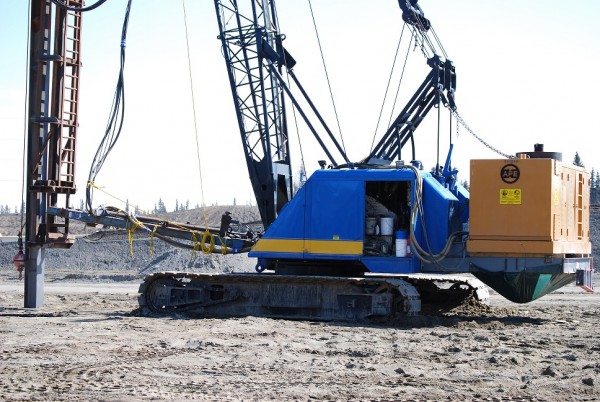Shallow Compaction:
Mechanical compaction is the process of densifying (i.e., compacting) loose (unconsolidated) soils through repeated passes by mechanical equipment (e.g., drum/sheepsfoot rollers, vibrating plate compactors, etc.). The semi-static weight and/or vibratory action of the equipment compacts the unconsolidated soils to a specified level of compaction determined by a geotechnical engineer and suitable for supporting the proposed loads. Mechanical compaction is the standard for most grading projects, but has limited compactive penetration potential based on the size of the equipment used and the capacitive effort applied. Therefore, most mechanical compaction is generally applied to relatively thin lifts of fill (typically <2 ft in thickness – depending upon the size/type of the equipment used) so that the entire vertical section of fill material is properly compacted. We provide mechanical compaction recommendations for a wide variety of projects and conditions as well as provide mechanical compaction testing services during construction.
Deep Compaction
Deep ground improvement techniques can be effective for projects where loose, unconsolidated soils occur at depth and where over-excavation and fill replacement (using standard mechanical compaction techniques) are not feasible and/or cost effective. Some common instances when deep ground improvement techniques may be applicable include (but are not limited to):
Recently thawed permafrost soils (particularly sand-rich soils);
Aeolian deposits (i.e. wind-deposited soils);
Domestic landfills; and
Mass fill that was placed without any capacitive effort.
Three of the more common deep ground improvement techniques which have been used successfully in Alaska include:
- Deep dynamic compaction - performed by dropping a large weight from height using a crane or other lifting device. The impact from the falling weight serves to compact the underlying soils.
- Vibrocompaction (a.k.a vibroflotation) – performed by inserting a vibrating probe (known as a vibroflot) into the ground using a water jet to loosen the native materials The vibratory action is typically provided by a vibratory pile hammer attached to the end of the probe.
- Surcharging/precompression – for highly compressible, normally consolidated fine grained soils, precompressing the soils prior to site development can be accomplished with a surcharge fill that remains in place while the underlying soil consolidates. Wick drains inserted into the soil can accelerate the time required for the soils to consolidate by providing a shorter path for excess water to dissipate.
These deep ground improvement techniques have been proven to be effective in various deep ground improvement scenarios, given that the proper technique is selected for the existing subsurface conditions. A geotechnical engineer should always be consulted prior to the preparation and execution of any deep ground improvement plan so that the site conditions can be properly evaluated and an appropriate approach can be designed to suit the site conditions and design criteria.


